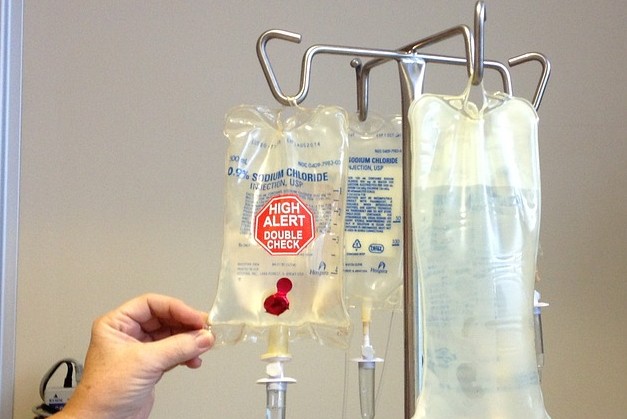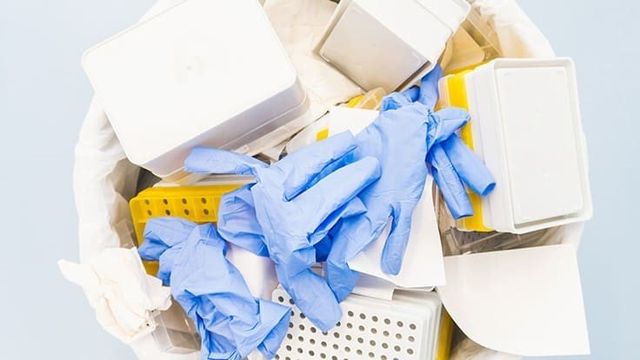Medical Waste Removal Mastery: Where Service Excellence Satisfies Health And Wellness Requirements
Medical Waste Removal Mastery: Where Service Excellence Satisfies Health And Wellness Requirements
Blog Article
Stay Ahead of Rules: Specialist Guidance on Medical Waste Disposal
In a globe where the medical care industry is constantly advancing, it is critical for medical facilities to stay in advance of policies when it pertains to the correct disposal of clinical waste. With rigorous standards and frequent regulatory changes, it can be challenging to navigate the complexities of this procedure. However, with professional recommendations, centers can make sure conformity and reduce risks related to incorrect waste disposal. From recognizing the various groups of clinical waste to carrying out the best collection and partition approaches, this conversation will offer actionable tips and beneficial understandings to help facilities remain in advance of laws in the ever-changing landscape of clinical waste disposal.
Understanding Clinical Waste Categories
Understanding clinical waste classifications is important for correct disposal and administration in medical care facilities. Clinical waste describes any type of waste generated by health care tasks that may posture a risk to public wellness or the atmosphere. It is critical to categorize clinical waste properly to ensure its secure handling, transport, disposal, and treatment.
There are several categories of clinical waste that healthcare centers need to be knowledgeable about. One of the most usual classifications consist of infectious waste, pathological waste, sharps waste, pharmaceutical waste, and chemical waste. Each category has specific guidelines and policies for its appropriate monitoring and disposal.
Infectious waste includes materials polluted with blood or various other physical liquids, such as gloves, dress, and research laboratory cultures. Pathological waste refers to human tissues, body organs, or body parts that call for unique handling and disposal. Sharps waste consists of used needles, syringes, and other sharp objects that can cause injury and transfer infections. Drug waste consists of run out, extra, or infected medications that require mindful handling and disposal. Last but not least, chemical waste consists of solvents, disinfectants, and other chemical compounds made use of in medical care centers.
Staying Up-To-Date With Regulatory Changes
Remaining existing with governing adjustments is crucial for medical care centers to make sure conformity and proper management of clinical garbage disposal. medical waste removal near me. With guidelines frequently developing, it is important for healthcare centers to stay up-to-date to prevent charges, fines, and possible damage to the environment and public health
To remain ahead of governing adjustments, medical care facilities need to develop a system for monitoring and monitoring updates. This can be done by signing up for regulatory e-newsletters, going to workshops and meetings, and proactively taking part in market associations. In addition, facilities should mark a staff participant or team in charge of staying educated and distributing info to pertinent stakeholders.
Routine communication with regulatory agencies is also essential. Healthcare centers need to establish partnerships with local, state, and government companies to ensure they are mindful of any modifications in regulations that may influence their waste administration techniques. This can be done through routine conferences, participation in public comment periods, and aggressive engagement with regulative firms.
Furthermore, medical care facilities need to think about partnering with waste management firms that focus on clinical waste disposal (medical waste disposal services with WasteX). These companies are usually fluent in the most up to date policies and can supply advice and support to make certain compliance
Executing Appropriate Collection and Partition Approaches
To effectively take care of clinical waste disposal, healthcare facilities should establish proper collection and segregation methods based on regulative guidelines. Executing these techniques ensures the risk-free handling and disposal of possibly harmful materials, shields the setting, and lessens the threat of infections and injuries to health care workers and the public.
Appropriate collection and segregation methods involve making use of marked containers and labeling systems. Medical care centers must supply clearly labeled containers for different kinds of my sources clinical waste, such as sharps, contagious waste, pharmaceutical waste, and non-hazardous waste. These containers must be color-coded and clearly marked to stay clear of confusion and advertise simple identification.
Additionally, medical care centers should train their team on the right procedures for collecting and setting apart medical waste. This consists of enlightening them on the different sorts of waste, the ideal containers to utilize, and the significance of complying with guidelines and laws. Normal training sessions and correspondence course need to be carried out to ensure that personnel continue to be current on medical waste disposal services with WasteX best techniques.
Moreover, healthcare centers ought to develop a system for normal collection and disposal of medical waste. This might include partnering with licensed waste administration companies that specialize in clinical waste disposal. These business will make sure that the collected waste is delivered and dealt with in conformity with regulatory demands.
Picking the Right Disposal Techniques

Incineration is one of one of the most reliable and usual methods for throwing away particular sorts of clinical waste, such as pathological waste and sharps. It entails the regulated burning of waste at high temperatures, reducing it to ash. Nevertheless, incineration can launch unsafe toxins right into the air and add to air contamination.

Chemical treatment includes the usage of chemicals to counteract the waste and disinfect. Microwave treatment uses microwave energy to heat and disinfect the waste.
Making Sure Conformity With Documents and Training
After meticulously thinking about the ideal disposal methods for clinical waste, healthcare centers must ensure conformity with policies and lessen ecological effect by carrying out efficient paperwork and training procedures. This action is critical in keeping a sustainable and safe environment for both healthcare employees and the public.

Healthcare workers who deal with medical waste ought to get proper training on waste partition, managing, and disposal treatments. By supplying detailed training, medical care facilities can empower their staff to make informed decisions and decrease the threat of inappropriate waste disposal.
Verdict
Finally, remaining in advance of guidelines in clinical waste disposal is important for health care facilities. medical waste removal near me. Recognizing the different categories of medical waste, remaining upgraded with regulatory changes, implementing appropriate collection and segregation approaches, selecting the suitable disposal methods, and ensuring compliance through documentation and training are all crucial actions. By complying with these guidelines, medical care companies can effectively dispose and manage of clinical waste in a risk-free and responsible manner
From comprehending the different groups of medical waste to implementing the appropriate collection and segregation approaches, this discussion will certainly supply valuable insights and workable ideas to assist centers remain in advance of regulations in the ever-changing landscape of medical waste disposal. - medical waste disposal services with WasteX
The most usual groups include contagious waste, pathological waste, sharps waste, pharmaceutical waste, and chemical waste. Healthcare facilities ought to supply plainly classified containers for various kinds of clinical waste, such as sharps, infectious waste, pharmaceutical waste, and non-hazardous waste. Health care centers must develop a thorough system to record and track all aspects of medical waste disposal, including types of waste generated, quantities, and disposal methods used. Healthcare workers who handle medical waste should receive appropriate training on waste segregation, handling, and disposal treatments.
Report this page